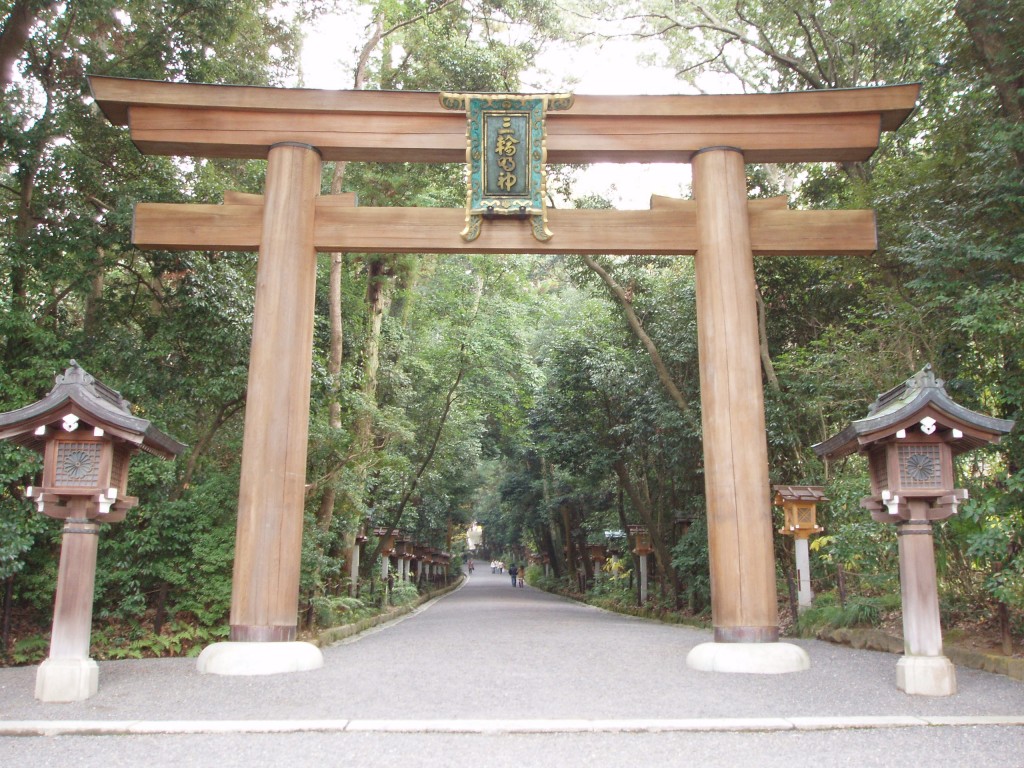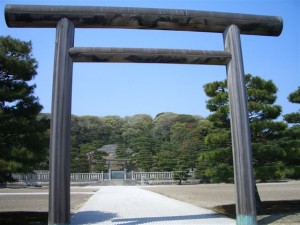 In Glimpses of Unfamiliar Japan (1894), Lafcadio Hearn shares his delight at discovering the folk customs of the Matsue region (Shimane prefecture). It was his honeymoon period and he is enchanted by all he sees. The book is available online – http://www.gutenberg.org/ebooks/8130.
In Glimpses of Unfamiliar Japan (1894), Lafcadio Hearn shares his delight at discovering the folk customs of the Matsue region (Shimane prefecture). It was his honeymoon period and he is enchanted by all he sees. The book is available online – http://www.gutenberg.org/ebooks/8130.
Here Hearn comes upon a torii for the first time…….
There is a lofty flight of steps here also, and before them a structure which I know is both a gate and a symbol, imposing, yet in no manner resembling the great Buddhist gateway seen before. Astonishingly simple all the lines of it are: it has no carving, no colouring, no lettering upon it; yet it has a weird solemnity, an enigmatic beauty. It is a torii.
‘Miya,’ observes Cha. Not a tera this time, but a shrine of the gods of the more ancient faith of the land—a miya. I am standing before a Shinto symbol; I see for the first time, out of a picture at least, a torii. How describe a torii to those who have never looked at one even in a photograph or engraving? Two lofty columns, like gate-pillars, supporting horizontally two cross-beams, the lower and lighter beam having its ends fitted into the columns a little distance below their summits; the uppermost and larger beam supported upon the tops of the columns, and projecting well beyond them to right and left. That is a torii: the construction varying little in design, whether made of stone, wood, or metal. But this description can give no correct idea of the appearance of a torii, of its majestic aspect, of its mystical suggestiveness as a gateway. The first time you see a noble one, you will imagine, perhaps, that you see the colossal model of some beautiful Chinese letter towering against the sky; for all the lines of the thing have the grace of an animated ideograph,—have the bold angles and curves of characters made with four sweeps of a master-brush.

Main torii at Omiwa Jinja
A useful note to the passage runs as follows: “Various writers, following the opinion of the Japanologue Satow, have stated that the torii was originally a bird-perch for fowls offered up to the gods at Shinto shrines—’not as food, but to give warning of daybreak.’ The etymology of the word is said to be ‘bird-rest’ by some authorities; but Aston, not less of an authority, derives it from words which would give simply the meaning of a gateway. See Chamberlain’s Things Japanese, pp. 429, 430.”


Leave a Reply